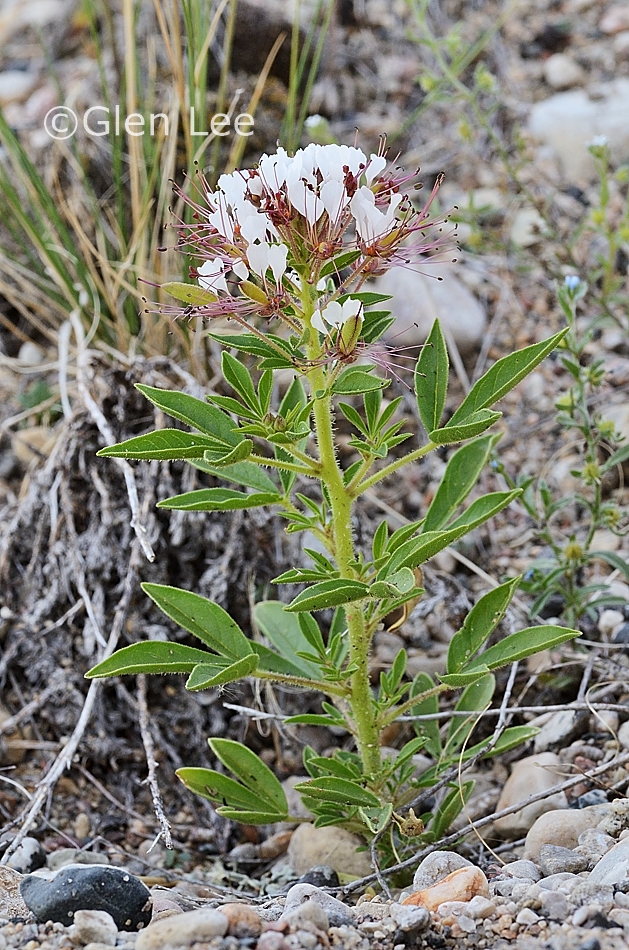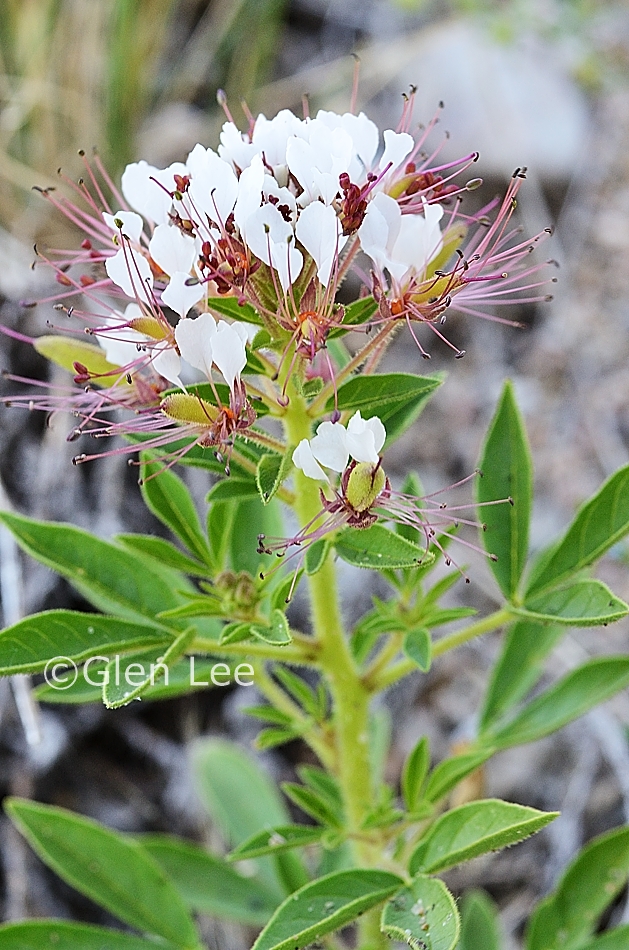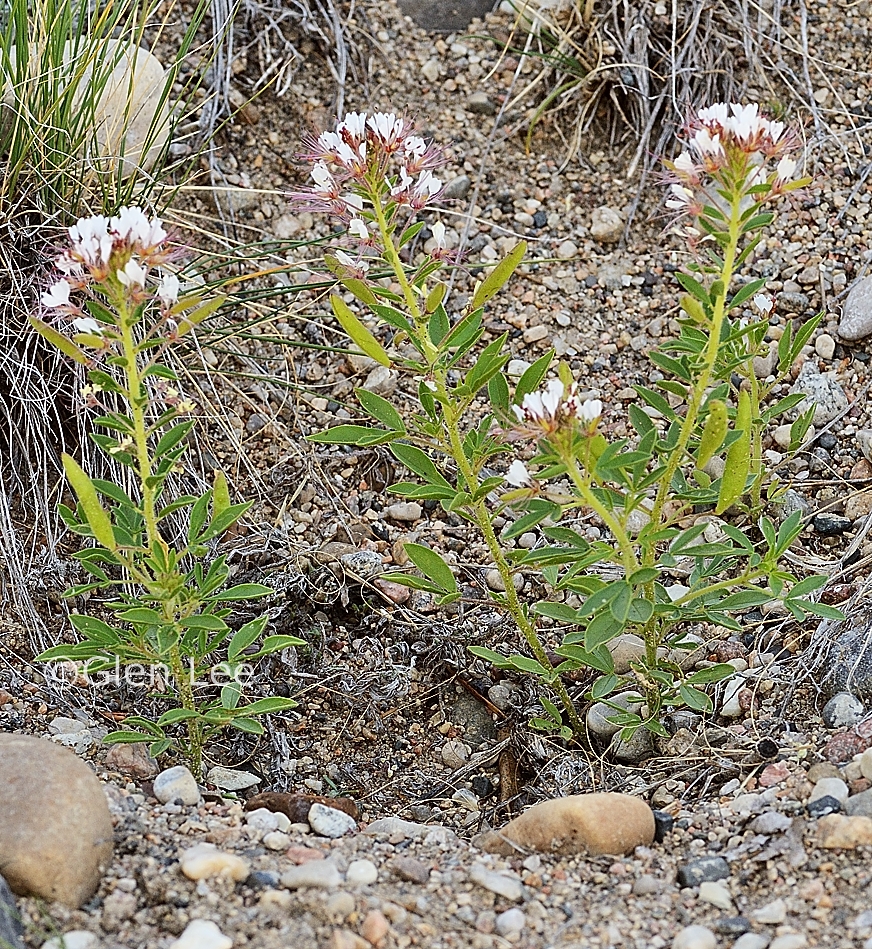Polanisia dodecandra (Clammyweed) - photos and description












Looking straight down on a flower


Stems are glandular hairy


Origin: Native.
General: Annual plants that are sticky-hairy and whose foliage is foul-smelling when touched. Larger plants have a branching growth habit. Stems and pods are glandular hairy.
Flowers: Flowers grow in crowded racemes, are creamy-white with 4 petals and 4 sepals. We measured petals at 1 cm long and sepals at 4 mm long. Petals have two lobes and narrow to a stalk-like base. Stamens are reddish in colour, uneven in length and are arranged beneath the petals. We counted up to 17 stamens.
Fruit: Pods are ascending, and we measured a pod to 4 cm long. The Flora of Alberta says the pods are sessile (little or no stalk). Not the case with plants I have photographed in two locations 500 km apart from one another. The Flora of North America writes: Pedicels 10-25(-40) mm.
Leaves: Leaves are opposite and alternate, trifoliate with leaflets oblanceolate in shape. We measured a leaflet to 35 mm long and 11 mm wide. Leaves are ciliate, bottom of leaves are glandular hairy, top of leaves are glabrous.
Height: Height listed in Budd's Flora to 50 cm tall, we measured plants from 6 to 34 cm tall.
Habitat: Disturbed sandy and gravelly soils, stream banks, gravel pits.
Abundance: Very rare, ranked as an S2 (as of 2021) by the Saskatchewan Conservation Data Centre.
Similar species: This plant might be mistaken for Peritoma serrulata (Pink Cleome). However, that plant has pods that are pendant, is not glandular hairy, its flowers have 6 or fewer stamens, its stamens are not arranged underneath the petals, and its pods have an elongated stipe.
When and where photographed: The above photos were taken July 12th in an abandoned gravel pit about 350 km west of Regina, SK and on July 14th and July 27th, slopes of gravel pit, Qu'Appelle Valley about 125 km east of Regina, SK.